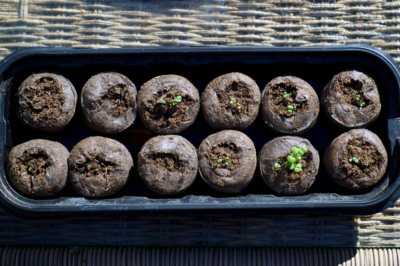Buying a pre-pulled catnip and planting it in the garden is no mean feat. If you’re looking for a little challenge and love watching small seeds grow into pretty perennials, grow catnip from seed.

Contents
Choose suitable seeds
If you already have a catnip and want to propagate it, you can use its seeds. But beware: not all varieties of catnip are well fertile and produce seeds.
Well-suited and popular varieties include the citrusy-mint scented catnip ‘Odeur Citron’ or the white flowering variety ‘Snowflake’. The ‘Suberba’ variety makes a pretty contrast to ‘Snowflake’ and is considered widely available.
Depending on which cultivar you choose, the choice of location will depend on this later. Gray-leaved varieties like it warm and dry. Green-leaved varieties grow best in a semi-shady and moist location.
Sowing – from the beginning to the end
The best time to sow catmint seeds is between March and April. By June at the latest, the seeds should be encouraged to germinate. Otherwise, the probability that the catnip will bloom in the same year becomes less and less.
Here’s how to proceed:
- Sow seeds in seed jars or pots.
- keep 5 cm distance between each seed
- cover lightly with soil
- place in a bright and warm place
- keep soil moist
Depending on the temperature, it takes between one and four weeks for the seeds to germinate. The ideal substrate for growing is sandy-loamy, slightly acidic and low in nutrients. When the plants are 5 cm tall, they are planted in a suitable location . They should not be planted outdoors until after the Ice Saints in May.
Attention: Likes to sow on its own
Since catnip likes to self-seed, you do not necessarily have to take the sowing into your own hands. If you want to prevent self-seeding, cut off the wilted inflorescences after the main bloom in summer.
Tips & Tricks
When you place the seeds in the soil and cover them with a thin layer of soil, you should press the whole thing down well before flooding it with water. Otherwise, there is a risk that the tiny seeds will float away from their intended place.

